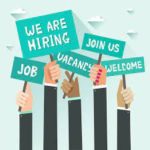 Whatever happens in the presidential election next Tuesday, Americans may be in for a very rude awakening. Call it a lesson on how the world economy really works
Whatever happens in the presidential election next Tuesday, Americans may be in for a very rude awakening. Call it a lesson on how the world economy really works
Most people think that the Federal Reserve sets our interest rates, which form the basis for things like home mortgage rates. It’s easy to come to this conclusion given how economics gets reported. The truth? The Fed only sets the rate for what banks charge each other for overnight loans to cover reserve requirements. That can influence long-term rates as it sets the expectation for future inflation, but it only has influence. Instead, those rates are set by the people who buy bonds that cover our country’s $30 trillion Federal debt. They’re called bondholders.
It’s hard to underestimate their power. Back in July 2022 the United Kingdom’s new Conservative Prime Minister Liz Truss introduced what she called a “mini-budget”, handing wealthy Britons the largest tax cut since the 1970s, unfunded by corresponding spending cuts. Almost overnight the 5-year mortgage rate jumped to 5.25% from 3.63% and the British pound crashed from £1.25 to $1 to £1.03 to $1. That’s a staggering 31% increase in mortgage costs, calamitous in a country where short-term mortgages are the most common. The currency collapse – again, driven by traders — meant that prices for many goods imported from the United States, jumped 25%. Her government lasted 49 days.
How’d this mess happen? Bondholders who held British debt dumped it, and currency traders started betting against the pound. They lost confidence given the government’s £49 billion unfunded tax cut. Traders no longer believed Britian would be able to pay its bills, given the size of the cut and the firm belief, underwritten by history, that tax cuts don’t pay for themselves through economic growth. It’s a stupid idea invented by an economist scribbling on a napkin over drinks, repeated endlessly by venal politicians and known by bondholders to be a fantasy.
Fair warning to America. Both our presidential candidates and most of the citizenry seem utterly oblivious to the country’s galloping debt and its implications. The Trump Administration grew the national debt to $32.54 trillion by 2020 from $25.56 trillion four years previous. President Biden’s spending took it to $35.46 trillion. By contrast, in 1979 the national debt stood at a meager $3.4 trillion. We pay for this shortfall by floating Treasury bonds, which traders buy at an interest rate that they essentially set. We’re okay if they’re willing to pay at a reasonable price. If not, interest rates would spike, prices would go up, and we’d have to slash spending. Massive and highly unpopular cuts would occur across the entire federal budget.
Neither candidate has proposals addressing our vulnerability to debtholders. Instead, non-partisan groups like the Center for a Responsible Federal Budget estimate that both candidates would hike the deficit. The myriad of tax cuts proposed by Former President Trump’s aren’t offset by spending cuts. If his entire program were enacted, it’d lead to a debt increase of at least $7.5 trillion dollars over 10 years, with analysts warning they could conceivably add $15 trillion. Vice President Harris, thanks to tax increases, holds the increase to $3 trillion over ten years, but that’s hardly fiscal rectitude.
All this spending requires the bondholders. But hesitation is already in the air.
Despite recent Fed interest rate cuts, the 10-year Treasury note climbed to 4.28% on October 31, up from 3.64% two months ago. Traders have started to price in the inflation risk. None of this reflects the impact post-election political instability and violence would have. If we see third-world scenarios play out in this country, bondholders will run. Part of our attraction as an investment is our very stability. I’m not sure why so few think of this as threats of violence, hints at coups, or cries of vote stealing fill the airwaves. Finance shows no favorites, and bondholders won’t hesitate to teach us this.
We often think we know what we’re choosing, when in fact we don’t, because unintended consequences aren’t factored in. I heard former President Trump speak to the New York Economic Club a few weeks ago, where his promise to cut the corporate tax rate from 21% to 15% received raucous applause. No one shouted the obvious: What about the deficit? Similarly, Vice President Harris’s promise to give first time home buyers $25,000 grants sounds great. But how is it paid for? Whether corporate taxes or home buying, it’ll be debt. We’re careening into a financial swamp of our own making, fueled by wishful thinking and that oldest of sins, greed.


